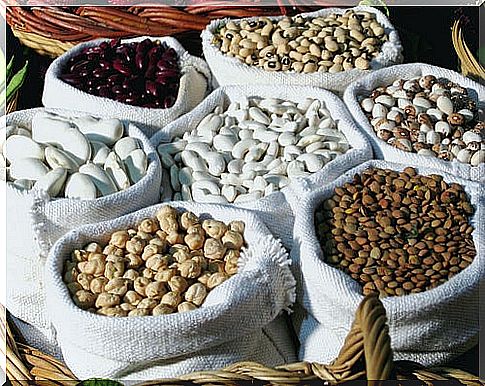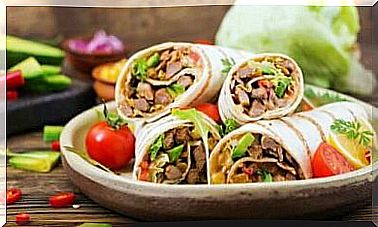Legumes – Properties And Tips For Better Digestion
If you wait for the legumes to sprout, they will contain more nutrients. To prevent flatulence, it is advisable to prepare it as a puree and not to combine it with other foods.

Legumes are not only very inexpensive, but also very nutritious. They contain a large amount of healthy vegetable proteins, fiber, vitamins and minerals.
Even if they are considered fattening and difficult to digest, in this article we explain what properties they have, for whom they are particularly suitable and how they promote better digestion.
Advantages of the legumes

- Legumes provide plenty of energy because they are nutritious and high in carbohydrates.
- They have a filling effect. That is why they are very suitable for weight loss cures.
- They contain vegetable proteins, which makes them indispensable during the growth phase, for athletes, during pregnancy, etc. There is less protein than in animal foods and they are therefore easier to absorb and healthier.
- They are high in fiber, which is essential to avoid constipation and to keep blood sugar and cholesterol levels in balance.
- They are rich in minerals like iron, calcium, phosphorus, magnesium, iodine, and potassium.
- They also contain vitamins of the B group, which help regulate the central nervous system and prevent stress, anxiety and depression.
- They reduce excess fluid in the body.
- Legumes reduce the risk of heart disease.
- They are inexpensive.
- Thanks to their high nutritional value, pulses should be eaten at least three times a week. With a vegan or vegetarian diet, even more is recommended.
In the event of gout attacks or elevated uric acid levels, consumption should be checked or a doctor should be consulted beforehand.

As for soy …
Soy is a legume that has become very popular in recent decades. However, more and more scientific studies are finding that soy doesn’t have as many benefits as has been claimed. In addition, soy has now been genetically modified.
For this reason, we advise using other legumes, if possible from organic farming.
Tips for Better Digestion
- They should be soaked in water for a day. If they rest damp for another day (without water), germination can begin. So they are more digestible and much healthier. If germination continues (keeping the legumes moist), they are ideal for salads or as a side dish.
- Bring the legumes to the boil after the soaking time and as soon as the water starts to boil, remove them from this water and add new water to bring it to the boil again.
- Caraway seeds or fennel help prevent possible flatulence.
- To make the legumes soften faster, you can add a piece of kombu (type of seaweed), which you can also eat afterwards.

- Even those who are prone to flatulence – this can be due to an inappropriate chewing process – should still not do without legumes. Purees, creams or vegetarian burgers are suitable here. Another alternative are cold dishes such as hummus or tarts.
- Often the legumes are not to blame for flatulence but rather a bad combination of foods. This is why we advise using only vegetables for a legume stew. If there are no digestive problems, you can combine the legumes with whole grain cereals (rice, oats, millet or quinoa).
- Don’t forget: Legumes can also be eaten cold in salads with rocket, grated carrots, boiled egg, finely chopped onion, mayonnaise, etc. They taste so delicious, especially in summer.
- The meal should end with a digestive tea, such as chamomile, anise, cinnamon, ginger or mint. After a meal with legumes, it is better to forego dessert, as the fermentation of the food can otherwise cause flatulence.









